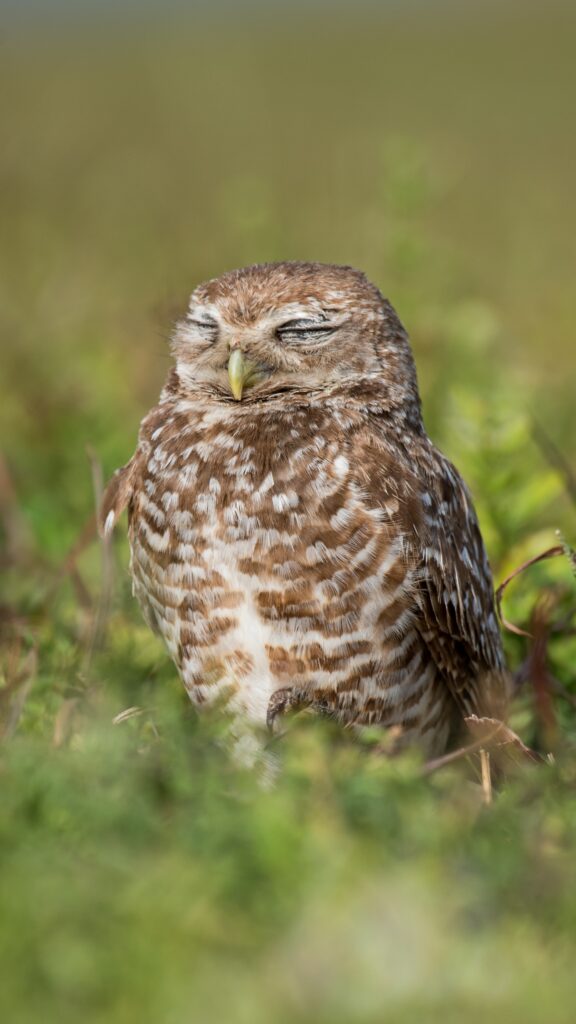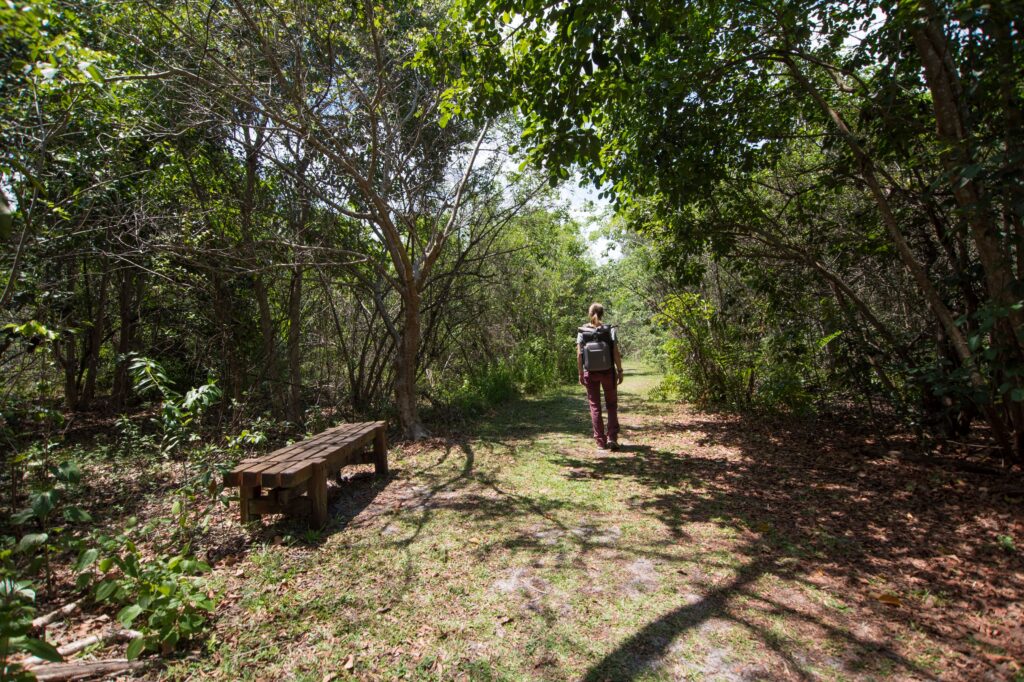By Lourdes Mederos, UF/IFAS Communications
Across the United States, more than 440 national parks and 7,400 urban parks offer a variety of recreational green spaces for people and pets.
Yet, the United States Forest Service warns that urbanization, including park development, is reducing natural habitats for plants and animals, infringing on wildlife survival.
How can urban parks continue to be vital havens for wildlife, even as they are designed to meet the growing needs of people? A first-of-its-kind study by University of Florida scientists explores this critical balance and provides insights on ways to achieve harmony for smart urban park design.

Published in the journal of Urban Forestry and Urban Greening, scientists at UF’s Institute of Food and Agricultural Sciences (UF/IFAS) studied the parks of one of the most populated counties in the Sunshine State – Broward – to answer that question.
Researchers analyzed over 600 urban green spaces throughout Broward County to explore how different physical attributes such as tree canopy, athletic facilities and playgrounds relate to human activity and biodiversity.
“We found that the size of the green space is a strong predictor of both human utility and biodiversity. Importantly, our findings highlight that green spaces need to be carefully designed to support biodiversity, but also a mix of green spaces with different goals is important,” said Corey Callaghan, senior author of the study, and an assistant professor of global ecology at the UF/IFAS Fort Lauderdale Research and Education Center (UF/IFAS FLREC).
Urban green spaces are integral to the health of the environment and the people who live in cities. They provide critical services like air and water purification, climate regulation and opportunities for recreation. More than that, they sustain diverse forms of life by offering habitats to a variety of species, scientists found.
Urban green spaces are critical because they serve as assets within cities, supporting both ecological and social systems. These areas offer places for recreation, relaxation and connection to nature — benefits that are closely tied to mental and physical well-being, Callaghan said.
“Meanwhile, for biodiversity, green spaces provide essential habitats for birds, insects, mammals and plants, helping to sustain populations in otherwise fragmented urban landscapes,” he said. “Ecologically, these spaces contribute to climate regulation by reducing the urban heat island effect, improving air and water quality, buffering against flooding and sequestering carbon.”
These spaces also help to buffer the impacts of flooding and help sequester carbon. This dual role — supporting human well-being and ecological health — makes urban green spaces essential as cities grow.
One important takeaway from the study highlights how urban green spaces can be designed to serve different purposes, although these purposes can sometimes conflict with the needs of wildlife.
Features like sports fields and playgrounds are great for people but can reduce habitat quality for sensitive species, Callaghan said.
“On the other hand, dense vegetation and limited lighting support biodiversity but may be underused by people. It’s all about finding that middle ground,” said Nataly Miguez, a lead author on the paper who conducted this research as an undergraduate student from the UF geography department.
Frequent mowing to maintain manicured lawns can harm native pollinators, and light installations for safety purposes can disrupt nocturnal species. Despite these trade-offs, there are ways to design green spaces that can benefit both people and wildlife. The researchers recommend incorporating native plant species, creating tree canopies and connecting separate green spaces to provide better habitats for wildlife, while also supporting human activities.

To further enhance the coexistence of human activities and wildlife in urban green spaces, leveraging modern technology and community involvement is essential.
One way to incorporate them is through data-driven insights, made possible by citizen science platforms like iNaturalist, which allow people to directly contribute to our understanding of biodiversity in urban spaces.
Citizen science platforms like iNaturalist played a pivotal role in gathering the vast amount of biodiversity data needed for this study. By providing members of the public with a way to contribute observations of plants and animals in urban parks, these platforms provide a unique and scalable tool to assess biodiversity across large areas.
Using this data, scientists and urban park planners can better align urban greenspace management with the needs of both human visitors and the wildlife that calls these spaces home, said Callaghan.
The study’s findings show that thoughtful, data-informed park planning doesn’t have to compromise biodiversity for recreation — or vice versa. By identifying which park features support both wildlife and human use, planners across the country can design urban greenspaces that are more resilient and ecologically functional. This research provides a model that can be applied far beyond South Florida, offering guidance for cities nationwide that are striving to protect nature while serving growing populations.
“As cities continue to expand, we need to ensure our greenspaces are working harder for both people and biodiversity,” said Callaghan. “That means ongoing investment in research, monitoring and community science platforms like iNaturalist. The more we know, the better we can design spaces that are inclusive for both humans and biodiversity. Continued support is key to making that vision a reality.”
This piece was originally published at https://blogs.ifas.ufl.edu/news/2025/04/10/are-we-losing-our-wildlife-to-benches-and-ballparks-uf-ifas-research-shows-how-smart-designs-can-avoid-it/. Banner photo: An athletic facility in Broward County (Brittany Mason, UF/IFAS Fort Lauderdale Research and Education Center).
Sign up for The Invading Sea newsletter by visiting here. To support The Invading Sea, click here to make a donation. If you are interested in submitting an opinion piece to The Invading Sea, email Editor Nathan Crabbe at nc*****@*au.edu.



